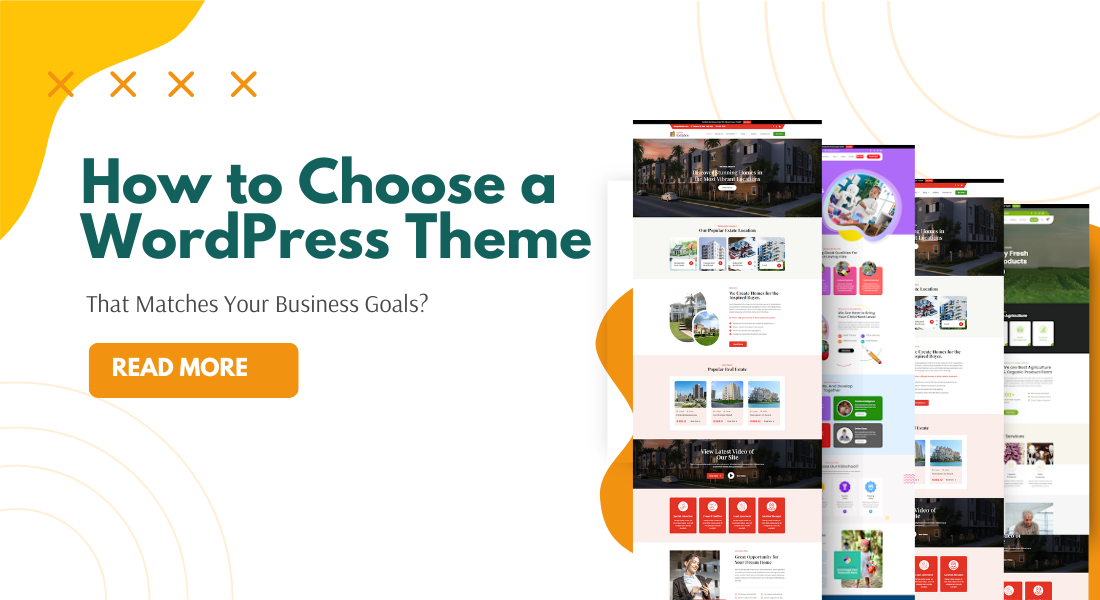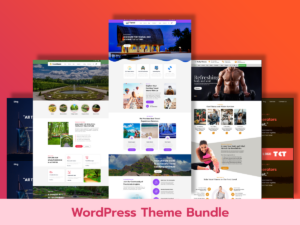
When you and I start a new website, the first question that often pops up is How do we make it look perfect? I’ve been there too, scrolling through hundreds of WordPress templates trying to find one that matches the brand’s vibe, speed, and SEO goals. Choosing the right layout can make your website faster, more professional, and conversion-friendly.
That’s exactly why learning how to choose a WordPress theme. It’s not just about visuals; it’s about performance, mobile optimization, and user experience. Whether you’re building a business site, portfolio, or online store, picking the best responsive, SEO-optimized, and AIO-ready theme helps your website rank higher and perform smarter every single day.
| Why SEO, Speed, and Design Must Work Together?A great theme is one that balances performance, SEO, and user experience. Google loves websites that load quickly, have organized headings, and are easy to navigate. Visitors stay longer when they can find what they need without confusion. Always remember, SEO isn’t something you add later; it should be part of your website foundation. Good theme coding, clean image formatting, and page optimization help your site rank naturally over time. When you start with a strong theme, everything else, content, marketing, and sales, works better. |
How to Choose a WordPress Theme: A Step-by-Step Beginner’s Guide?
Let’s discuss how you can choose the best WordPress theme that can help you choose the themes according to your business goals:
1. Understand What Your Website Needs
Before you even start browsing, ask yourself what you really want your website to do. For example, are you setting up an online store to sell products? Then you’ll need a WordPress theme for e-commerce that supports product pages, shopping carts, and payment gateways.
If your goal is to promote local services, such as real estate, construction, or consultation, you’ll need a clean and professional layout that clearly shows what you offer. And if you want to share thoughts or creative ideas, a blog-style layout will fit better. When you start with a clear goal, it becomes much easier to know how to choose a WordPress theme that focuses on your purpose instead of getting distracted by fancy effects.
2. Keep the Design Simple and Fast
I know how tempting it can be to pick a website full of moving slides, animations, and transitions. But too much design can slow your site down. Visitors don’t stay long if your pages take forever to load. A clean and simple theme makes your website faster, easier to navigate, and more enjoyable. Search engines like fast websites too, which means your SEO rankings will improve. Focus on themes that are light and quick to load, without unnecessary features. That way, users will get the information they need without waiting.
3. Make Sure the Theme Looks Good on Mobile
Most of your visitors are likely to browse from their phones. That’s why your theme must automatically adjust to any screen size, mobile, tablet, or desktop. When you test a demo, open it on your phone and scroll through. Notice if everything looks aligned and easy to read. Buttons should be easy to press, and menus should be simple to open. Even the best WordPress templates can fail if they don’t perform well on mobile. A responsive theme helps you connect better with every visitor, no matter what device they use.
4. Check SEO-Friendly Features
An attractive website doesn’t mean much if no one finds it on Google. When you decide how to choose a WordPress theme, always check whether it’s designed with SEO in mind.
A good theme should have clean code, a lightweight structure, fast-loading pages, and compatibility with SEO plugins like Rank Math or Yoast SEO. These small details make your website easier for search engines to read and index. SEO-friendly design also includes proper use of heading tags, image optimization, and mobile support, all things that affect how your website ranks.
5. Choose a Theme That Matches Your Brand
Think of your website as your digital face. When someone visits it, they should instantly understand your style and purpose. That’s why it’s important to choose a theme that fits your business identity. For example, if you run a boutique or fashion brand, go for something stylish and modern. The Fashion WordPress Theme from ThemesCarts has elegant layouts and image-based sections that make products stand out beautifully. If you’re in construction, real estate, or engineering, you’ll want something stronger and more structured. In that case, the Construction WordPress Theme works perfectly because it’s designed to highlight projects, services, and customer trust. Matching your theme to your business type will help customers feel connected and confident in your brand.
6. Look for Easy Customization Options
A flexible theme is a smart investment. You might want to change your homepage design, switch colors, or add new sections in the future. Choose a theme that allows you to do all of this without needing complicated code. Themes that work with drag-and-drop builders like Elementor or the WordPress block editor give you full control. You can change layouts, add images, adjust fonts, and build pages your way. When you learn how to choose a WordPress theme, customization is one of the most important features to look for. It lets you grow without limits.
7. Check for Regular Updates and Support
Think of your theme like a car; it works smoothly as long as you maintain it. The same goes for WordPress themes. Developers release updates to fix bugs, improve performance, and stay compatible with newer versions of WordPress. Before buying, check if the developer offers regular updates and customer support. Do they provide installation help or documentation? Can you contact them if something breaks? Reliable support will save you hours of frustration. When I select premium layouts, I always check the support section first. It’s part of how I decide how to choose a WordPress theme that will stay secure and updated over time.
8. Try the Demo and Imagine Your Own Content
Before committing to a theme, explore its live demo. Pretend it’s your website, picture your photos, your product names, and your brand colors inside it. Ask yourself simple questions: Does it fit your content naturally? Is the homepage layout easy to read? Can users quickly find what you sell or offer? Spending a few minutes testing the demo saves you weeks of regret later. You’ll immediately feel if a theme matches your business personality or not.
9. Invest in a Good Theme or Bundle
There are many free themes out there, and they’re good for learning. But for a professional business, you need quality features, security, and flexibility. That’s why I suggest checking out the Premium WordPress Themes by ThemesCarts. These themes are built for both speed and SEO, and they fit perfectly for different industries—fashion, construction, education, fitness, or blogs. If you work with multiple sites or clients, the WordPress Theme Bundle is a smart buy. It gives you many premium templates at once, so you can easily pick what suits each project. Premium themes often come with one-click install features, pre-built demos, and dedicated support, letting you build professional websites faster.
10. Think Long-Term and Plan for Growth
Finally, always look ahead. Your website today might be small, but your business will grow. The theme you pick should support that growth. Let’s say you start with a company portfolio site, but later want to add an online store. If your theme supports WooCommerce integration, you can easily add e-commerce pages without rebuilding the whole website. That’s why scalability is so important when considering how to choose a WordPress theme. A well-built, flexible design saves you time, cost, and rework as your goals expand.
Common Mistakes to Avoid When Choosing a Theme
Let’s look at some common mistakes people make and how you can easily avoid them when learning how to choose a WordPress theme.
1. Choosing a Theme Only for Its Attractive Design: It’s easy to fall for visuals a stylish homepage, fancy sliders, or vibrant animations. But design alone doesn’t guarantee performance. A good-looking theme that loads slowly or doesn’t fit your content structure will harm your site more than help it.
2. Picking a Theme with Too Many Unnecessary Features: Sometimes themes come loaded with extra features like sliders, galleries, or animations you might never use. These extras make your site heavier, causing slow load times and poor SEO. When a theme tries to do too much, it often ends up doing nothing efficiently.
3. Ignoring Update or Support History: A theme that hasn’t been updated for months or years could break when WordPress releases a new version. Unsupported themes also pose security risks and compatibility issues. Before installing, check if the theme developer offers regular updates, documentation, and customer support.
4. Not Checking Site Loading Speed: Speed affects both user experience and ranking. If your theme takes more than three seconds to load, most users will leave. You can use tools like Google PageSpeed Insights or GTmetrix to test the demo version before buying.
5. Forgetting to Test Mobile Performance: More than half of web traffic comes from mobile users, so if your theme doesn’t look good on phones, it’s a big problem. Always test the demo layout on different mobile devices.
6. Choosing One Without Proper SEO Structure: Even a stylish theme can fail if it’s not coded properly for SEO. Themes without clean structure, meta tags, or schema markup make it harder for search engines to recognize your content.
7. Overlooking Compatibility with Essential Plugins: A theme that conflicts with popular plugins can limit your website’s potential. Always verify that it supports plugins for SEO, security, forms, and e-commerce.
8. Ignoring Your Target Audience and Content Type: Sometimes a theme looks great, but doesn’t suit your audience’s preferences. For instance, a bold, dark theme may look perfect for gaming blogs but might not work for a home decor website.
When you avoid these errors, you get closer to knowing exactly how to choose a WordPress theme that fits your long-term business vision.
Final Thoughts
A WordPress theme is the heart of your website. It sets the tone for everything your visitors see and feel. Now that you know how to choose a WordPress theme that fits your needs, focus on clarity, performance, and long-term planning. Don’t rush the process. Review demos, check performance, look at customization, and think about your visitors’ experience first.
It’s not just about finding a theme that looks good; it’s about choosing one that helps your business grow, reach more people, and make the right impression from the start. If you ever feel unsure, explore ThemesCarts. Their ready-to-use designs, from fashion to construction templates, give you powerful, SEO-friendly options to create a professional site that truly reflects your goals.

